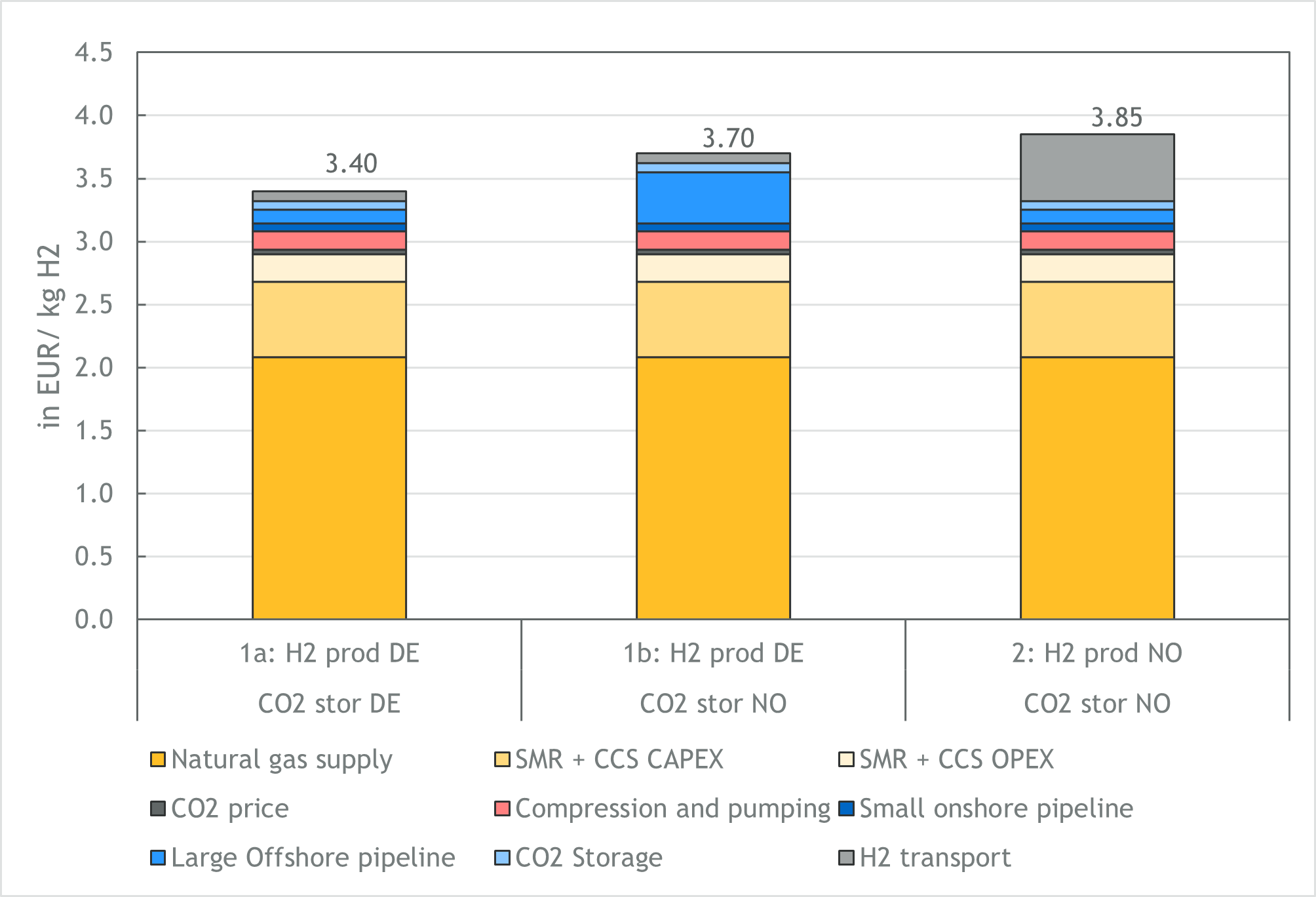
The EU Commission is currently consolidating a delegated act on low-carbon fuels. Among other things, it is intended to define the GHG emission thresholds for low-carbon hydrogen and its derivatives such as ammonia and synthetic kerosene. In international climate neutrality studies, low-carbon hydrogen produced from natural gas with CO2 capture serves as a bridging technology. In German climate neutrality studies, low-carbon hydrogen currently only plays a subordinate role. In addition, CO2 storage is currently prohibited by law in Germany.
In this context, the Institute of Energy Economics (EWI) at the University of Cologne examines regulatory aspects of the production and use of low-carbon hydrogen in Germany and the EU as well as a techno-economic analysis in the research report “Low-Carbon Hydrogen – a techno-economic and regulatory analysis”. The research report was financially supported by the Förderinitiative Wasserstoff der Gesellschaft zur Förderung des Energiewirtschaftlichen Instituts an der Universität zu Köln e.V.
Low-carbon hydrogen is mainly produced through steam reforming of natural gas, in which the resulting carbon dioxide is captured and stored. In the techno-economic analysis, the costs for three scenarios were examined. The natural gas required is sourced from Norway in all scenarios considered. Steam reforming and CO2 storage, on the other hand, are carried out either in Germany or Norway in the scenarios.
The costs of low-carbon hydrogen produced in Germany or Norway could be between 3.40 and 3.85 EUR/kg, assuming a natural gas price of 45 EUR/MWh. A major cost driver is the cost of natural gas, which could account for up to 60 percent of the total cost. “Due to lower costs for the transport of CO2 instead of hydrogen, it could be more cost-effective to produce low-carbon hydrogen in Germany instead of Norway at the same natural gas price,” says Dr.-Ing. Ann-Kathrin Klaas, who conducted the analysis together with Felix Schäfer, Carina Schmidt and David Wohlleben.

Low-carbon hydrogen is being discussed as a short to medium-term supplement to green hydrogen, which is produced using renewable electricity and an electrolyzer. There are currently 20 blue hydrogen production projects in operation around the world with a total production capacity of around 19 TWh of hydrogen per year. Additional 147 projects have been announced by 2030, meaning that production capacity could increase to over 500 TWh per year. In the International Energy Agency’s World Energy Outlook 2024, the use of low-carbon hydrogen is estimated to account for around 20 to 25 percent of total global hydrogen demand in 2050. In the EU’s Ten Year Network Development Plan (TYNDP), low-carbon hydrogen is considered a transitional technology with a share of more than 20 percent of total hydrogen demand in 2030 and only 4 percent in 2040.
In a currently discussed delegated act of the EU, low-carbon hydrogen is defined with a 70 percent emission reduction compared to fossil natural gas. This means that a GHG emission maximum of 3.4 kg CO2 eq./kg H2 would be permitted when considering the entire value chain. Low-carbon hydrogen is therefore not climate-neutral. EWI‘s analysis shows that a minimum capture rate of 88 percent is required to reach the threshold value. Although the process of CO2 capture is already commercially established, high capture rates of up to 95 percent are still in the pre-commercial demonstration phase.
“At EU level and in Germany, there are various targets for the development of the green hydrogen process chain, e.g. with regard to electrolysis capacities, imports and use in the industry sector. Explicit targets for the use of low-carbon hydrogen have not been defined,” says Ann-Kathrin Klaas. Low-carbon hydrogen could make a transitional contribution to achieving the emission reduction targets of various sectors. Nevertheless, hydrogen from natural gas steam reforming is only considered low-carbon if the CO2 is stored and not reused. The use of low-carbon hydrogen therefore requires the development of a CO2 infrastructure in addition to a hydrogen infrastructure. In Germany, the underground storage of carbon is currently prohibited by law. In addition, the export of CO2 for storage in off-shore storage facilities is not permitted in the EU. A change to this legal situation is being discussed as part of the London Protocol at EU level and as part of the Carbon Storage Act in Germany.